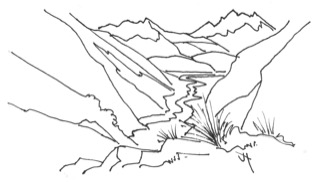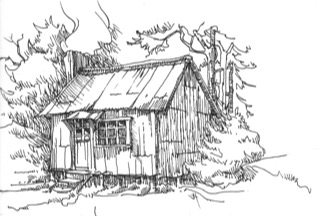New Zealand’s goal to become predator free by 2050 has been controversial. Now in the background, there are questions about its direction says an article in Stuff newspapers this morning, i.e. Monday 23 Oct. In the article, experienced journalist Eugene Bingham investigates what’s going on. Four other articles apparently will follow.


The Stuff article features a possum as part of Predator Free 2050 goal but possums are herbivores, not predators. See 2016 article below.

From the Past (2016)
Possums No Pest Says NZ First MP
NZ First MP Richard Prosser has told a recent public Blenheim meeting that possums are probably not a pest.
“I’m slowly coming round to the opinion that possums aren’t actually a pest at all, but rather an under-utilised valuable resource that gets the blame for a lot of things that probably aren’t it’s fault.” he said.
He said possums were much maligned, as they were not the cause of bovine tuberculosis as claimed by TbFreeNZ and nor did they damage the forest as claimed by the Department of Conservation. His assessment was based on questions about possums carrying bovine tuberculosis he had asked in Parliament of Primary Industries Minister Nathan Guy and on conversations with long time possum trappers and outdoorsmen. In Parliament the minister had replied that of 124,000 possums autopsied over the last 10 years, only 54 had bovine TB.
“That’s a rate of 0.04 per cent,” said Richard Prosser. “And of 9830 possums autopsied in the last 12 months, none had Tb. That’s zero percent. OSPRi claims of wild life spreading bovine TB, are totally wrong.”
He took issue with DOC and Forest and Bird claims that possums were defoliating forest trees and preying on bird’s nests. New Zealand’s vegetation had evolved over millions of years under heavy browsing by a dozen or so moa species and canopy dwelling birds such as the pigeon and kokako.
Possum Herbivore
“ Browsing is part of the bush’s ecosystem functioning. It’s adapted to browsing. And the deer is the best browser to replace the extinct moa,” he said.
Richard Prosser disputed the Department of Conservation’s claim that possums preyed on bird’s nests and instead pointed to scientific studies that showed bird material in autopsied possums was just 0.02 percent of diet.
“The possum is a herbivore, not a predator.”
Referring to Tb he said possum trappers who had trapped “tens of thousands” of possums over the years told him, virtually none had Tb.
Wairarapa conservationist and author of two books on the subject of the “poison industry” and ecology, Bill Benfield said the Tb control programme was arguably fraudulent, being based on demonising the possum.
“For the last 10 years, as data shows , New Zealand has had an infection rate of 0.04 percent for the last 10 years. If I understand it correctly, at 0.2% infection rate, New Zealand could (and should) declare itself Tb free, but it hasn’t, even though it has been at a much lower figure of 0.04 percent. Yet the Animal Health Board and now OSPRI have continued to operate and make claims as though the disease is rampant. Is this not fraud?” he said.
Outdoors author Tony Orman said he had long held the view that possums were wrongly accused of causing forest damage. He said MP Richard Prosser was “bang on” in his conclusion that possums were not a pest. Tony Orman first wrote about the “possum myth” in 1961 after reading 19th century missionary explorer William Colenso’s diary recording of travels in the Ruahine Ranges. Colenso wrote of stream beds choked with shingle, dead or dying trees and giant landslips.
“That was decades before possums, deer or any wild animals were liberated,” he said.
More recently he discovered a talk to a 1994 Department of Conservation workshop “Possums as Pests” given by Landcare Research scientist Graham Nugent gave who described the 70 million possum figure often used by DOC was an exaggerated “back of a cigarette packet calculation” and that even 70 million possums would consume only 15 percent of the new foliage daily produced.
Shonky Skin Test
Sporting Hunters Outdoor Trust spokesman Laurie Collins of West Coast, said the skin test used for detecting Tb in stock and which formed the bulk of TB testing apparently had a 20-25 percent error rate.
“That means by simple arithmetic, the probability is one in 10 stock tested, is infected but not identified by skin testing, known as a sleeper. Sleeper animals can then be sold, transported and infect a new herd and area.”
“Taranaki which had several TB outbreaks, had no possums,” said Laurie Collins. “So much for the possum TB myth.”
Although nationally infected Tb herds had fallen in number, MP Richard Prosser said with figures obtained by questions to the Minister, it strongly suggested that more effective movement control had been the real reason in the reduction, not in exterminating wildlife with 1080 poison.
” The single biggest reservoir and vector for bovine tuberculosis is cattle. It always has been cattle with the poor testing regime being used.”
Richard Prosser said evidence was for government in the neighbouring Town Belt on the “back doorstep” of Parliament where rats, stoats and possums lived with bird life thriving.
“The difference from wilderness public lands is they don’t dare drop 1080 poison over Wellington,” he said.
New Zealand’s use of poisons like 1080 and brodifacoum was a potential threat to exports. Exports of wild venison to Germany had been stopped because of European market concerns about 1080. Several years ago, a Bay of Plenty pet food manufacturer of pet food based on possum meat had export orders immediately cancelled when Japanese TV screened a programme on New Zealand’s aerial 1080 programme.
Meanwhile Conservation Minister Maggie Barry has announced 1080 poison will be dropped over hundreds of thousands hectares this winter as part of the largest ever pest control operation in New Zealand. She described the rat plague as of ‘biblical proportions.’


Interesting the goal is scheduled for 2050. Who will be around then to answer questions about the futility and the billions and billions of the public’s dollars wasted and also the ecological damage wrought?